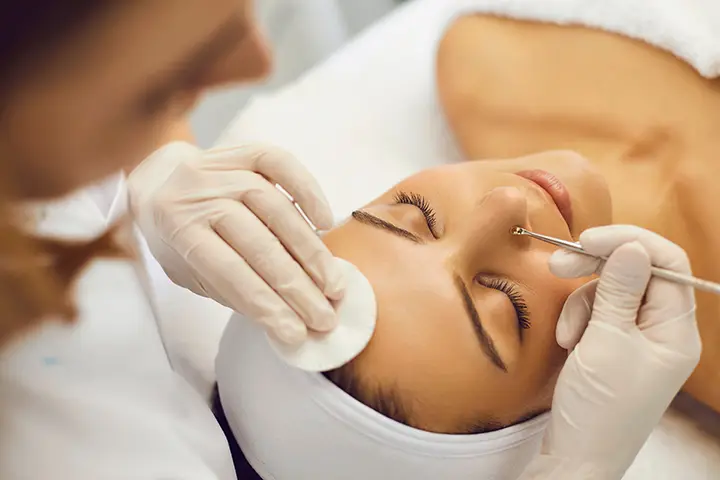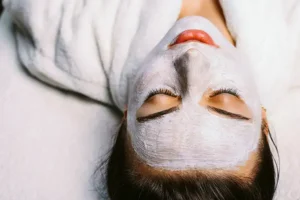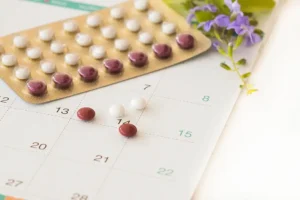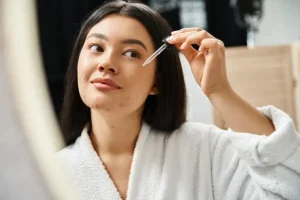Facial extractions are everywhere. They are often presented as a quick cure for acne, one session and pores look clear. The reality is different. Extractions can help a narrow group of people, and they can make acne worse for others. This guide explains what extractions do, who may benefit, and who should avoid them.
What Are Facial Extractions?
An extraction is a procedure where a dermatologist or licensed professional uses sterile tools to remove surface blockages like blackheads and whiteheads. It is not the same as squeezing at home. Professional extraction aims to reduce injury and infection, and results are temporary, so a skin care plan is still needed.
Who Might Actually Benefit?
Extractions make sense almost exclusively for comedonal acne. These are blackheads and whiteheads that sit close to the surface. In selected cases they can improve appearance quickly, for example before an event or when a few stubborn comedones resist routine care. Even then, pores tend to re-clog if you do not treat the underlying disease.
Who Should Not Get Extractions
Avoid extractions if you have any of the following:
- Inflammatory or cystic acne. These lesions are deeper and inflamed. Trying to extract them can worsen swelling, cause infection, and increase the chance of scars.
- Skin that scars or pigments easily. If you develop dark marks or keloids, manipulation increases risk of lasting marks.
- Very sensitive or rosacea-prone skin. Mechanical pressure can trigger irritation and flares. Clinical pages advise against squeezing or “cleaning out” spots for the same reason.
Do Extractions Treat Acne?
No. Acne is driven by follicular plugging, oil production, bacteria, and inflammation. Removing a plug today does not change those processes, so blockages return without medical therapy. Evidence-based care relies on retinoids, benzoyl peroxide, and other treatments that target the disease mechanisms, not just the contents of a pore.
Better, Science-Backed Options
Here is what dermatology guidance consistently supports, with simple how-to tips:
- Adapalene 0.1% gel (topical retinoid). A pea-sized amount to the entire acne-prone area at night, not as a spot treatment. Start every other night, then build to nightly as tolerated. Retinoids help prevent new clogs. Not recommended during pregnancy.
- Benzoyl peroxide 2.5% to 5%. Thin layer in the morning. It reduces acne bacteria and inflammation. It can bleach fabrics, so use white towels and pillowcases.
- Salicylic acid cleanser 0.5% to 2%. Massage for 20 to 30 seconds, then rinse. Helps clear debris from pores and complements retinoids.
- Professional options. Chemical peels can assist with comedonal acne when medications are not enough. Microdermabrasion is another surface option. A dermatologist decides the fit and timing.
- Sun protection. Daily SPF 30 or higher, non-comedogenic, to reduce post-inflammatory marks and support barrier health while using actives.
Myths To Leave Behind
- “Extractions cure acne.” They only remove what is visible now.
- “I can safely do it at home.” Squeezing raises the risk of scars and infections.
- “If I keep extracting, I will prevent breakouts.” New clogs form unless you treat the causes. Use a plan, not pressure.
If your main problem is blackheads and whiteheads, a carefully performed extraction can offer a short cosmetic reset. If a provider claims extractions will cure your acne, walk away. The safest, long term results come from treatments that address the biology of acne, paired with smart daily care. A good dermatologist will help you build that plan.
FAQs About Facial Extractions
Can facial extractions cause scars?
Yes. If extractions are done on inflamed or cystic acne, or performed at home, they can damage skin tissue and leave scars or dark marks.
How long do results from facial extractions last?
Results are usually short-lived. Pores may look clearer for a few days to weeks, but without proper acne treatment, clogged pores often return.
Are facial extractions safe during pregnancy?
They may be safe if done by a licensed professional, but skin can be more sensitive during pregnancy. Always consult your dermatologist before scheduling extractions.





